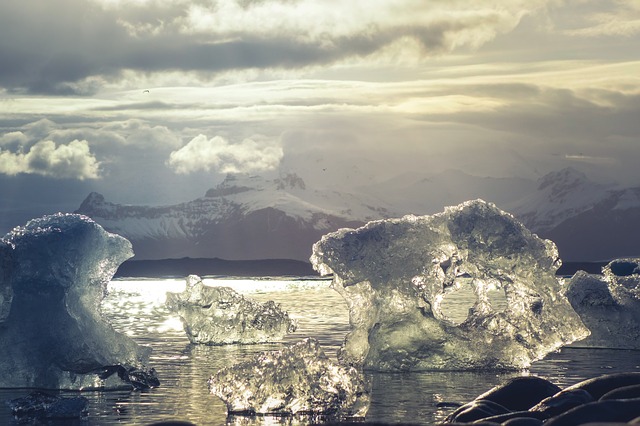The Arctic’s Coldest War
June 6, 2019 | Expert Insights

Background
The Arctic is the northern most part of the Earth. The surrounding lands are part of eight Arctic-bordering countries: Canada, Denmark, Finland, Iceland, Norway, the Russian Federation, Sweden and the US. The Arctic is at a crucial point in its transformation from a relatively isolated region to one where the receding ice is enabling increased human access. Newly accessible areas present significant economic opportunities. While the Arctic Council remains the authoritative international body on Arctic issues, the United States has started to develop its own strategy toward addressing its resources and claims toward the region. Meanwhile, Russia and China, have both declared the region a national priority and made corresponding investments in capability and capacity to expand their influence in the region.
Analysis
The Arctic’s role in a geostrategic competition is growing, in large part because reductions in permanent sea ice have exposed coastal borders and facilitated increased human and economic activity. The region has long been of interest to the U.S. military, and the American military has been intimately involved in the hostile environment for more than two centuries. The temperatures routinely plunge to -22 F (-30 C) and snow drifts cloak the treacherous terrains.
On May 10, 2013, President Obama released the National Strategy for the Arctic Region which articulated clear linkages between events in the Arctic and enduring US national interests. Climate change has opened vast areas of the Arctic to surface ships. This changes the calculus for military operations in the Arctic and the importance of the Arctic to the defense of the United States and its allies. The U.S. Navy continues exercises and missions in the region, said Navy Adm. James G. Foggo, the commander of U.S. Navy Europe/Africa and the commander of NATO's Allied Joint Force Command in Naples.
"The opening of the Arctic is an opportunity to work collaboratively with other nations to maintain security and stability in the region and with those who are willing to help maintain the freedom of the seas," Foggo said "Warming trends have sparked increased interest in the Arctic’s abundant natural resources and potential maritime trade routes — even from non-Arctic states," the admiral said. "Russia has recently embarked on a robust Arctic militarization plan”.
By 2020, Russia is expected to have full radar coverage, S-400 air defense and anti-surface missile coverage, a fully operational communication network and an underwater surveillance system bridging the over 1,600 miles from the Bering Strait to the Bering Sea, right off Alaska's coast. Russian forces have reoccupied seven former Soviet bases in the Arctic Circle and have also built new bases, to include the Trefoil base in Franz Josef Land and the Northern Clover base on Kotelny Island. Russia’s establishment of a Northern Sea Route Administration, along with the use of high ice-class Liquefied Natural Gas (LNG) tankers built specifically to export natural gas from its Yamal LNG facility, have contributed significantly to the increase in commercial shipping traffic in the Arctic. The government also enacted a policy change requiring sovereign vessels to provide 45 days notice to transit the Northern Sea Route — the Arctic route connecting the Kola Peninsula with the Bering Strait.
"This new law further requires foreign warships to embark a Russian pilot as well as provide details about the vessel — a clear violation of sovereign immunity," Foggo said. "Russia has also noted that they might bar innocent passage through the territorial sea for any reason, and they have threatened to sink any craft that defies Russian mandates while sailing in the Northern Sea Route."
In January 2018, China introduced its Arctic Policy, which sets forth a series of goals that largely rely on greater Chinese influence in the region. "Identifying themselves as a 'Near-Arctic State,' China has eyed investment opportunities that range from natural resource exploration to the future commercial maritime traffic potential of the 'Polar Silk Road’.
Assessment
Our assessment is based on the recent meeting where Secretary of State Mike Pompeo refused to sign on a document stating climate change posed a threat to the Arctic. We feel his stance is rooting for climate change to continue so that the climate profiteers are benefited. For example, any attempt to, say, institute a toll on Arctic shipping lanes, with the money going to the Green Climate Fund, would undoubtedly run into the considerable lobbying might of the industry. We feel that the US cannot meet the challenges of tomorrow’s Arctic with today’s paradigm due to technological advancement within the maritime industry combined with robust investments by the competitors that has raised the stakes.
The current Arctic Council serves as a forum for regional collaboration but it is too weak. In its mandate, it explicitly excludes military security. We feel that military security is directly linked to energy security for many Nordic countries including the US via Alaska. Therefore, an empowered Arctic Council would provide an honest broker to enforce peace. This will not be easy because most nations do not like to yield their authority and bear the costs of following international norms.
India Watch
India’s Arctic connection dates back to 1923 when, as part of the British Empire, it joined the Svalbard Treaty. The Treaty allowed signatories to carry out commercial activities on Norway’s Svalbard Archipelago. In the absence of an official Arctic policy, India’s Arctic research objectives are centred on ecological and environmental aspects, with a focus on climate change. Melting Arctic glacial ice is currently the chief contributor to rising sea levels, which could devastate coastal communities in India and across the Indian Ocean Region. India’s Arctic focus can strengthen its scientific capabilities in the region and maintain a robust diplomatic presence in the Arctic Council and its working groups. We feel that India lies far too south for the Arctic shipping routes to be attractive.








Comments